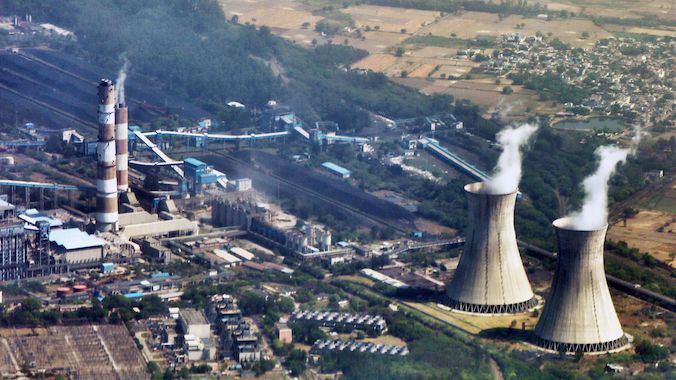Small Nuclear Reactors Are Still Just Nuclear Reactors
Photo by Creative Touch Imaging Ltd/NurPhoto/Shutterstock
There always seems to be a nuclear power renaissance just over the horizon. The latest version involves small modular reactors, or SMRs — reactors in the 25 to 300 megawatt capacity range, as opposed to the traditional behemoths that can eclipse 1,200 megawatts apiece. These little guys are supposed to be quicker to build, cheaper, suitable for less populated areas, and so on. The problem is, they’re still nuclear reactors.
“A key argument from SMR proponents is that the new reactors will be economically competitive,” said David Schlissel, an analyst with the Institute for Energy Economics and Financial Analysis and co-author of a new report on small reactors, according to a press release. “The on-the-ground experience with the initial SMRs that have been built or that are currently under construction shows that this simply is not true.”
The poster child for the supposed SMR revolution was NuScale Power, an Oregon-based company that promised to deliver six 77-megawatt reactors for a Utah utility company. The cost of the project was initially pegged almost a decade ago at $5.3 billion; by last year, it had ballooned to $9.3 billion. In November, it was canceled entirely.
The IEEFA report found similar cost increases in other major SMR companies’ plans as well. For example: in 2015, X-Energy estimated its reactors could be built for under $5,000 per kilowatt; by last year, that number was around $15,000. The few SMRs in existence have also borne this out; a reactor in China ran 300 percent over cost, and another under construction in Argentina ran past its target by 700 percent.
They also don’t seem to improve much on the decade-scale time delays that have plagued major nuclear construction. According to the IEEFA, projects that were supposed to take three to four years are now slated to take 12 to 13. There has also been hope that the cost overruns and delays are just part of a learning curve, and that once we get a few SMRs going, the next batch will be far easier.
That is not how nuclear power has worked in the past. Instead, it has exhibited a “negative learning curve,” getting harder to build as time goes on; though it can’t be ruled out, there isn’t really any indication that SMRs would be any different.
This is not a technology primed to help with climate change goals: 2050, the nice round year that the world has pegged as its net-zero target, is only 26 years away. How many 13-year projects with multi-billion-dollar cost overruns are really getting built in that time frame? How much solar and battery storage could we build instead?